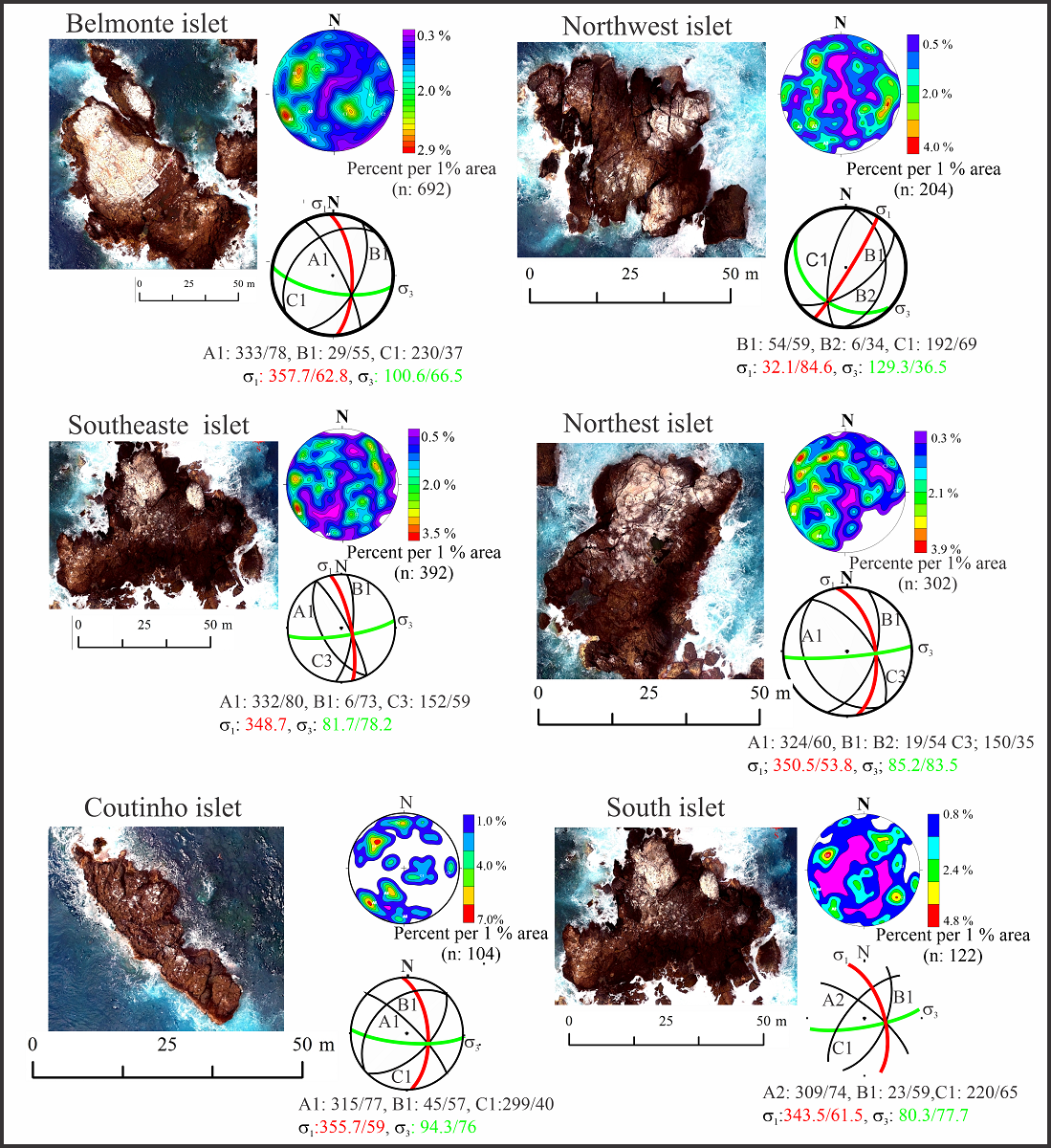This paper discusses the tectonics of the St. Peter and St. Paul Archipelago (SPSPA) in the Equato-rial Atlantic Ocean, based on the joint-system geometry which show a North-South shorten-ing/transpressional uplift tectonism, is active leading to exhumation of the sub-oceanic mantle. These islets are the summits of a sigmoidal submarine ridge formed by mantle ultramafic rocks. The ridge is crossed by the principal transform deformation zone of the northern transform fault of the St. Paul Multifault System. The South flank ridge exposes serpentinized mantle perido-tites, while the North flank exposes strongly deformed/fractured ultramylonites, recording duc-tile and brittle deformation at lithospheric conditions. The SPSPA show multiple joint systems cutting mylonitic foliation of the exposed rocks, forming three main families: high-angle paral-lel joints of tectonic origin, serpentinization-related joints with random direction and load-release low-angle parallel joints. The tectonic joints show an average direction of N31°E and N28°W, forming a conjugate system with a N1ºW compression axes, coherent with a trans-pressive stress field. Accordingly, the earthquakes focal mechanism close to the islets also shows N-S compression. The previously reported active uplift with an average rate of 1.5 mm/year and the directions of the joint system here reported agreeing with a present-day active N-S compres-sive field at a high angle with the direction of the transform fault.

